Introduction
Thanks to the convenience of shopping online, an increasing number of customers prefer to sit at home and order products instead of going to brick-and-mortar stores to get what they want. If you don’t want to put a lot of money or effort into an online store, then low-budget, short-term, and quick-install pop-ups could be the right solution for you. With pop up shop online, you can connect with customers from far and wide to grow your sales without financial risk and commitment to a permanent store.
In this article, LitExtension – The World #1 Shopping Cart Migration Exper will walk you through:
- What is a pop up online shop?
- How to set up a pop up shop online?
- Some example of the best pop up online shop
Without further ado, let’s get started!
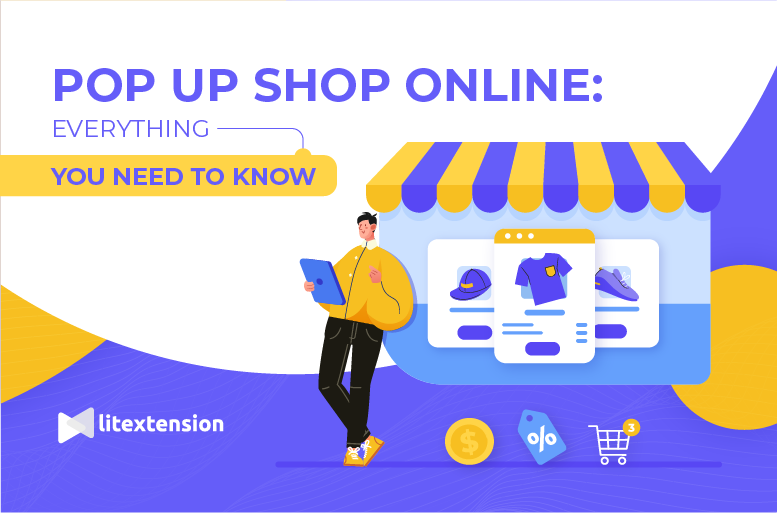
What Is a Pop up Online Shop?
A pop up shop online is a temporary eCommerce store. As their name implies, the products sold at an online pop-up shop are typically limited-edition items that can only be purchased for a short period of time.
Pop-up shops can look like normal online stores, but many brands are utilized them to create a unique and engaging online shopping experience. An online pop up shop can be used to grab customers’ attention and generate new revenue. Most pop up stores are seen as experiential marketing to promote new products or increase brand awareness.
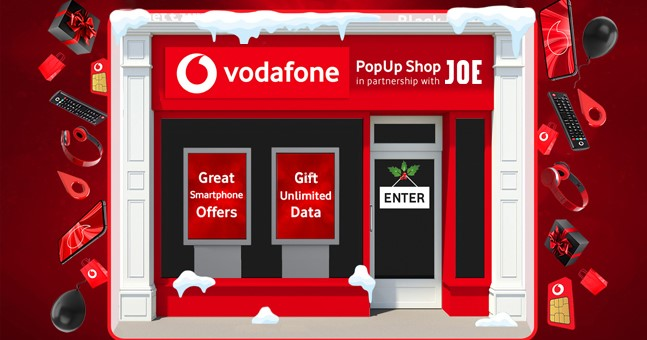
This special type of online store is favored by merchants who already have a brick-and-mortar business and are looking for a way to expand their borders during peak sale seasons. Since pop up shop online is temporary, store owners can easily select an eCommerce platform, select a monthly pricing plan, set it up, then pause the store whenever they want to stop using pop up shops online.
For example, if you decide to set up your pop up shop online on Shopify, you can pause your Shopify store when it’s the end of the sale season and put it back on any time you like.
How to Set up a Pop Up Shop Online
Now that we have a brief overview of what is a pop up shop online, it’s time we learn more about how to set up one.
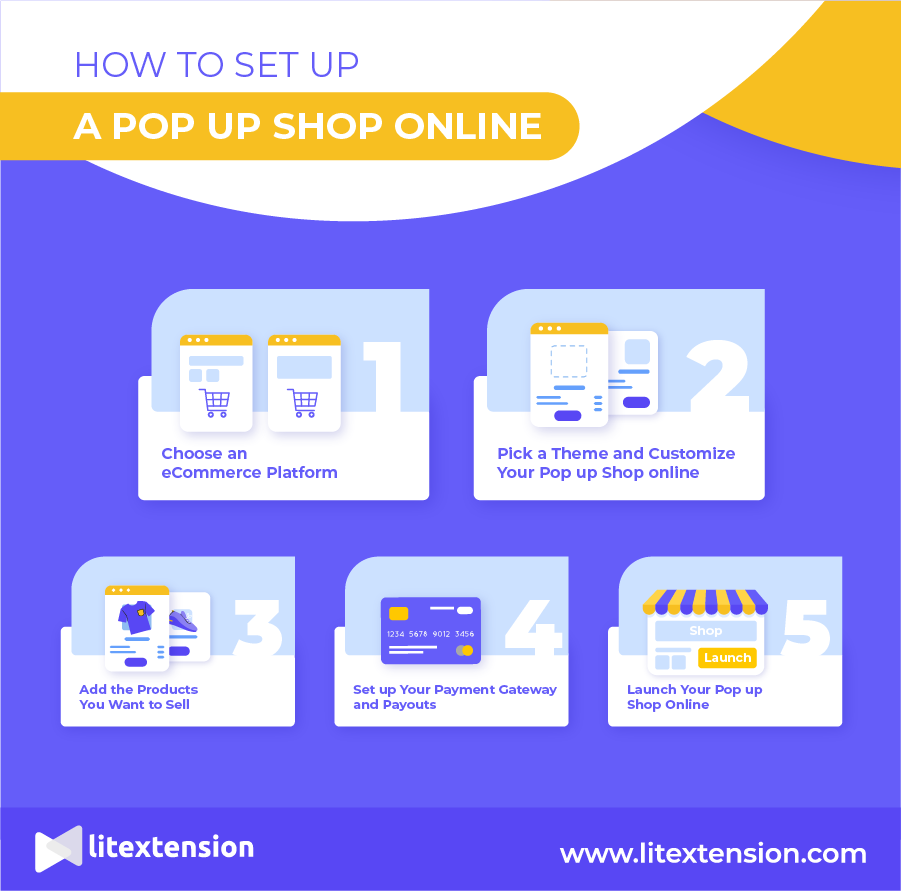
#1. Choose an eCommerce Platform
No matter what stage of business you are at, the eCommerce platform your storefront is hosted on has a big impact on your online pop up shop growth.
Keep in mind that there is no one-size-fits-all approach to choosing the right eCommerce platform. You need to choose a platform based on not just your current needs, but also your future requirements.
Here are our recommendations for the best eCommerce platforms you should go for:
And don’t forget to take a look at other solutions in the market to determine which one is perfect for you:
Though pop up stores are temporary, they do have an influence on customer experiences and your sales. Therefore, you’d better choose a suitable platform that meets the following fundamental requirements:
- Easy to set up: It’s better if you can save time and effort when setting up a pop up store. Therefore, platforms with drag-and-drop design or no technical skills required should be put on the list.
✧ Our recommendation: Shopify, Wix, BigCommerce
- Cost-effective pricing plan: Sure, a pop up shop online is worth investing in. But our advice is that don’t pour too much of your financial resources into pop up stores since it only appears in a short period of time. Therefore, one top priority is choosing a cost-efficiency pricing tier that is suitable for your business. This way, you can avoid overspending while still utilizing its functions.
✧ Our recommendation: Wix, WooCommerce, Magento
- Robust built-in features: The main purpose of a pop up shop online is to improve shoppers’ experience. Therefore, choosing an eCommerce platform with full built-in features will help you not only bring the best space for customers but also increase the likelihood of purchases.
✧ Our recommendation: Shopify, BigCommerce, WooCommerce
Live Your Entrepreneur Dream with Shopify
With its user-friendliness and powerful eCommerce features, Shopify is the ideal eCommerce platform to kick off your online store and start selling in no time. Utilize Shopify free trial to make money on Shopify now!
#2. Pick a Theme and Customize Your Pop up Shop Online
The next step is to decide a suitable theme for your pop up shop online.
Choosing a theme is similar to how you arrange and decorate your brick-and-mortar store. It has a big influence on how customers experience on your site. Therefore, keep in mind to choose a template that best matches your needs. Then you have to customize that template to fit your business’ branding.
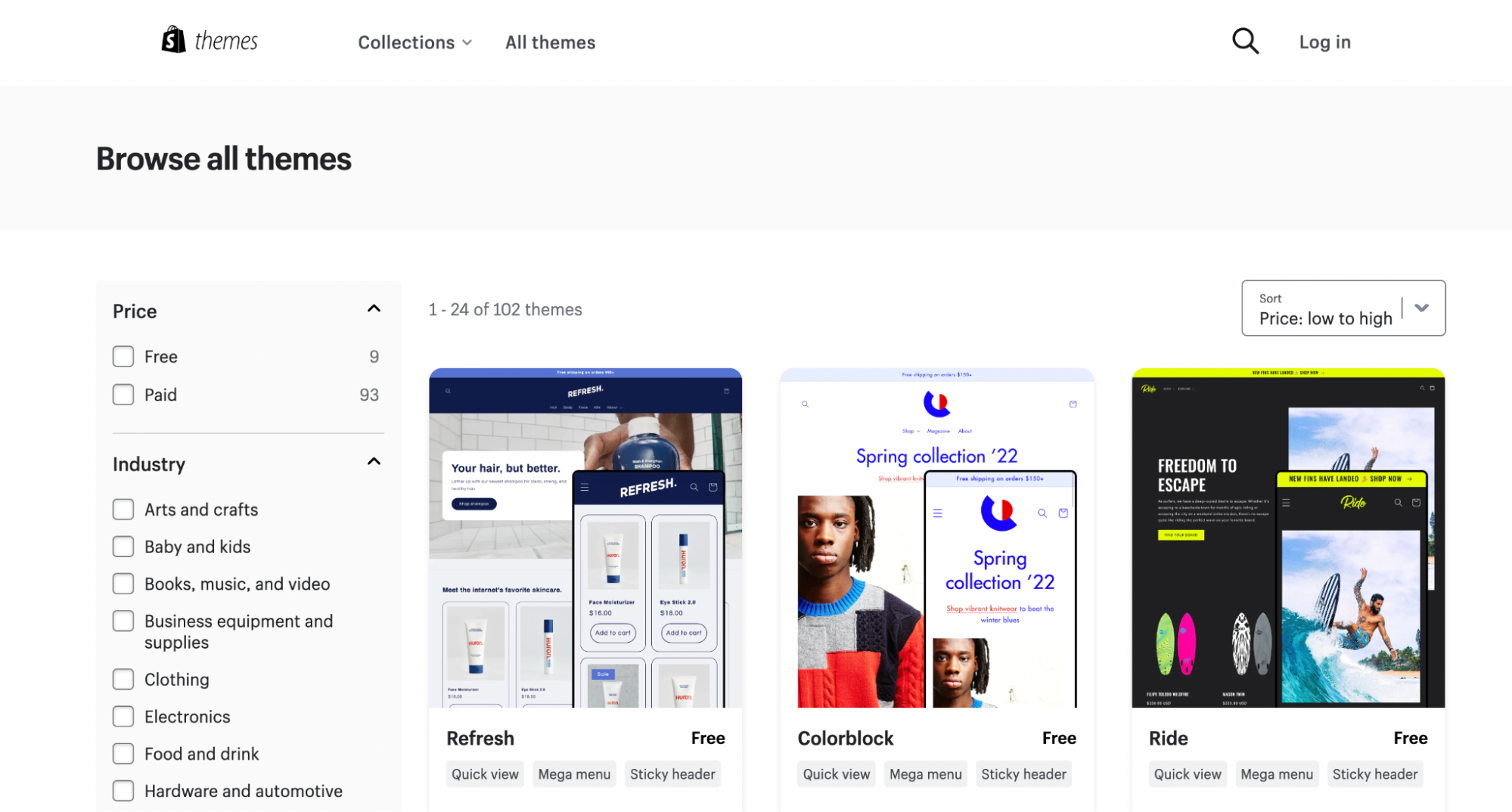
Here’s a quick checklist of what you should do after choosing a theme so that it perfectly aligns with your business:
- Customize fonts and text sizes
- Add high-quality visuals and branded assets
- Configure your color scheme
- Embed social media accounts and branded content
- Choose page layouts
Got lost in the amazing world of website templates? Check out our hand-picked themes below for some inspiration:
#3. Add the Products You Want to Sell
At this step, you need to set up your product category pages, create compelling product descriptions, and upload images of your products. By doing so, you’ll make sure that everything in your pop up shop online is displayed clearly and appealingly to your customers.
Product descriptions
A persuasive product description pinpoints the customer’s issue, enumerates the features, and emphasizes the key advantages to encourage a purchase.
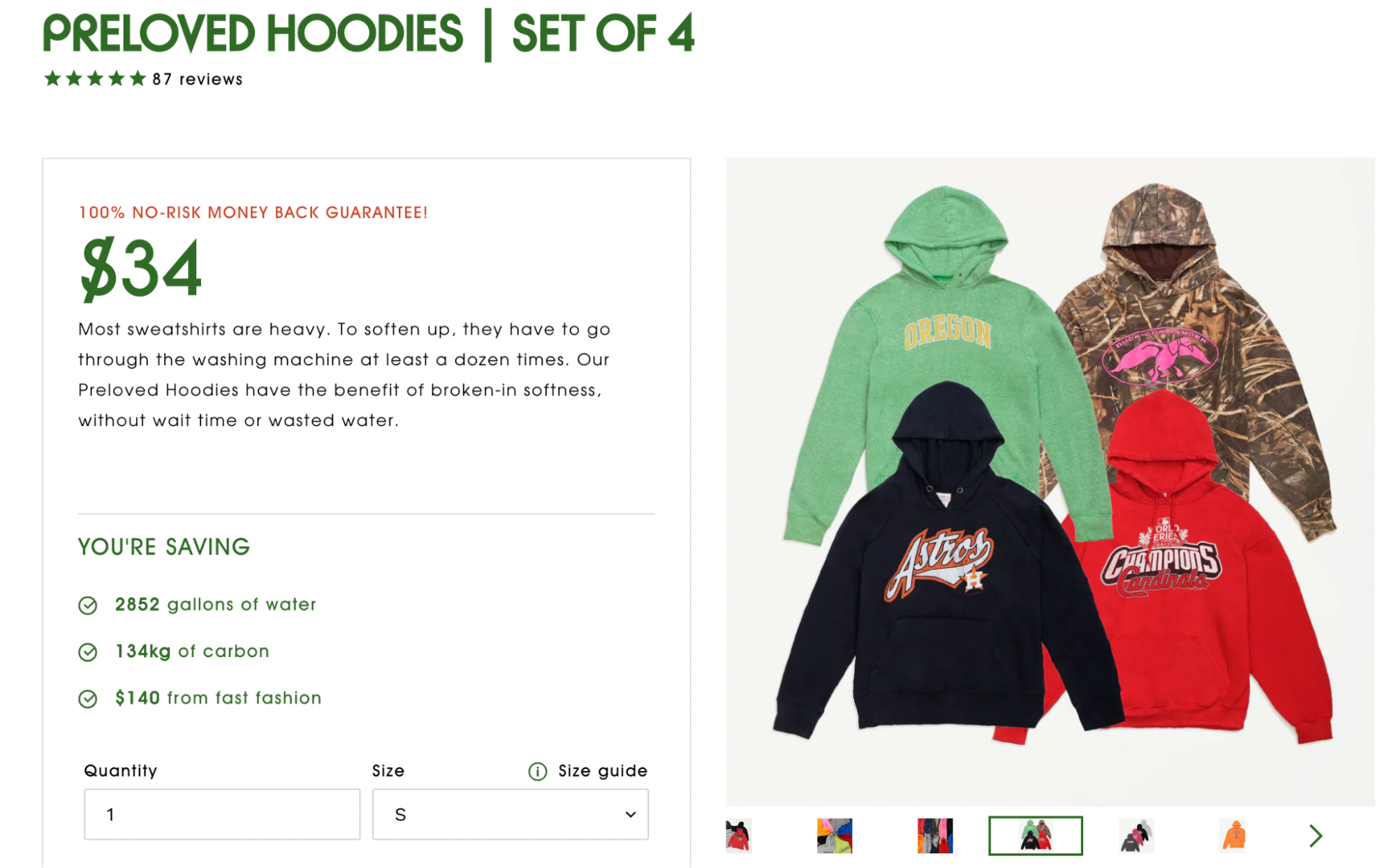
Here is some suggestions on how you can write a good product description that grab shoppers’ attention:
- Explain who this product is for.
- List the essential product characteristics (size, material, etc).
- Suggest when someone needs this product.
- Help the buyer envision where they’ll use it.
Product images
When it comes to selling a product online, your product image is unquestionably one of the most important factors that can:
- Make a good first impression: Online buyers often make an immediate value judgment based on the look and aesthetic of your product. It means you need to have clear, high-quality photos that accurately represent your product offering.
- Tell your brand story: Your product images are a major part of your overall brand presence, especially online. They are also a significant piece of how consumers perceive your brand.
- Make the sales connection: Your product images are what buyers and consumers will base their initial impressions of your products on. Therefore, it’s easy to see how your product images can have a great influence on your sales.
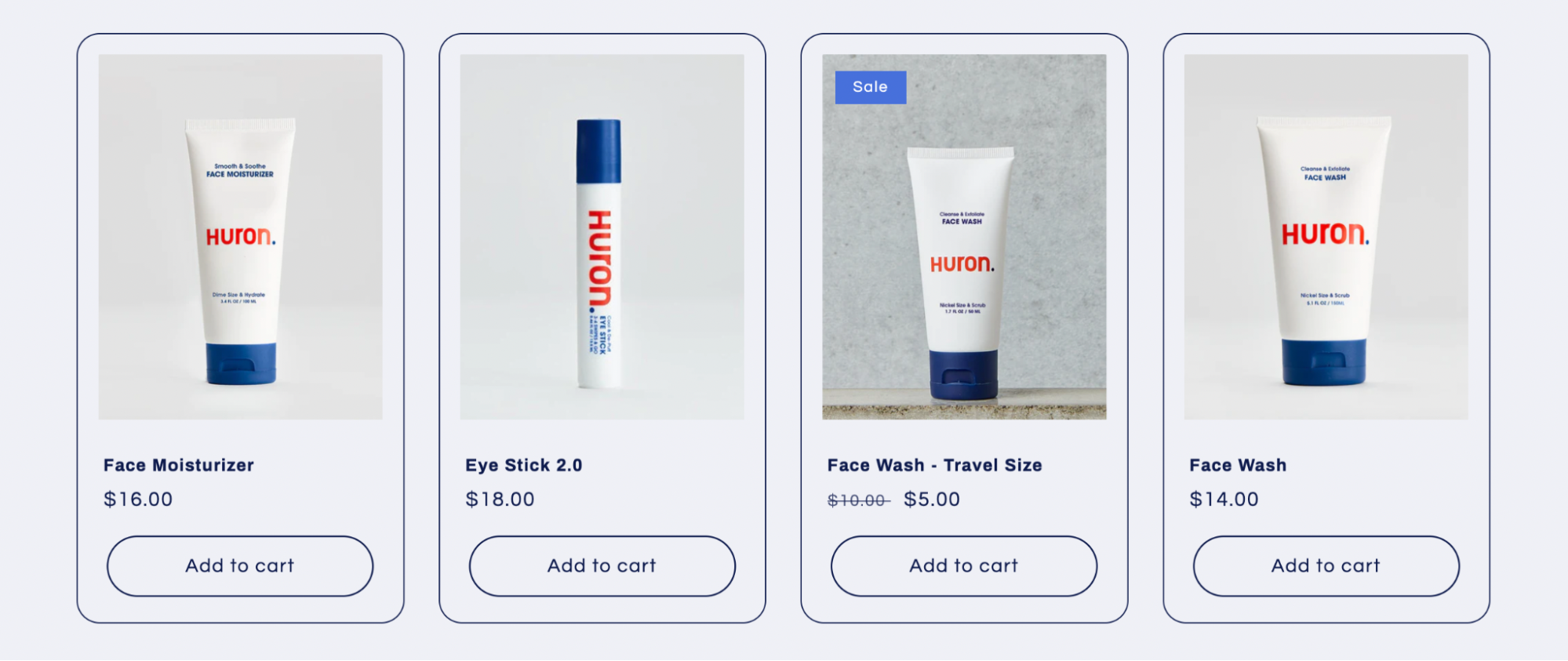
The most effective and eye-catching product images should have these characteristics:
- The product is shown against a completely white background
- The product is close up and takes up most of the image
- The image is very clear and high quality
Keep in mind that it’s important to showcase your product as it would appear in stores. This means that if your product is packaged, your image should be of your product in its packaging.
Additionally, for more expensive items like furniture, equipment, or specific clothing types, think about getting 360-degree photos. According to data supplied by Webrotate 360, business owners report a 5% to 40% increase in online sales after adding 360 product view functionality to their website.
Product groups
Relationships between various product pages can be established and managed with the aid of website taxonomies. Particularly, product categories are required to display your catalog correctly and increase the discoverability of your inventory.
Men’s, women’s, accessories, new arrival, and sale are the most common categories that many clothing retailers use. You can also add “Gift” categories during the holiday season or Black Friday – Cyber Monday; or “Featured sustainable brands” if your target audience is showing increasing interest in that topic.
Besides, additional filters should be available on product category pages to assist customers in limiting their selections. “Size“, “Price range“, “Color“, “Material,” are often the useful ones.
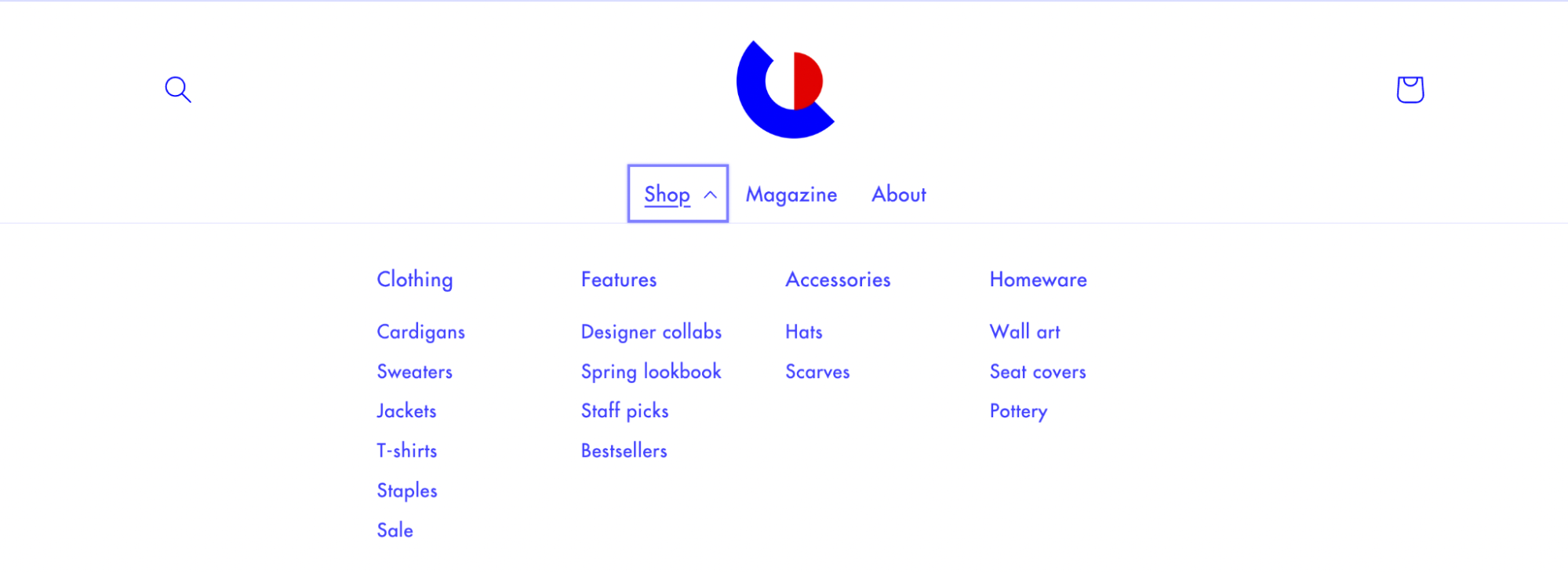
#4. Set up Your Payment Gateway and Payout
How you accept payments is one of the most crucial aspects to take into account when setting up a payment form or eCommerce store.
Customers anticipate quick and secure online payments. Therefore, you must set up the appropriate payment gateway for your business in order to make the process go as smoothly as possible.
There are many payment gateways to choose from. Belows are some of the most popular ones.
PayPal
One of the most popular available redirect payment gateways is PayPal. It has been trusted and recognized by millions of customers all over the world.
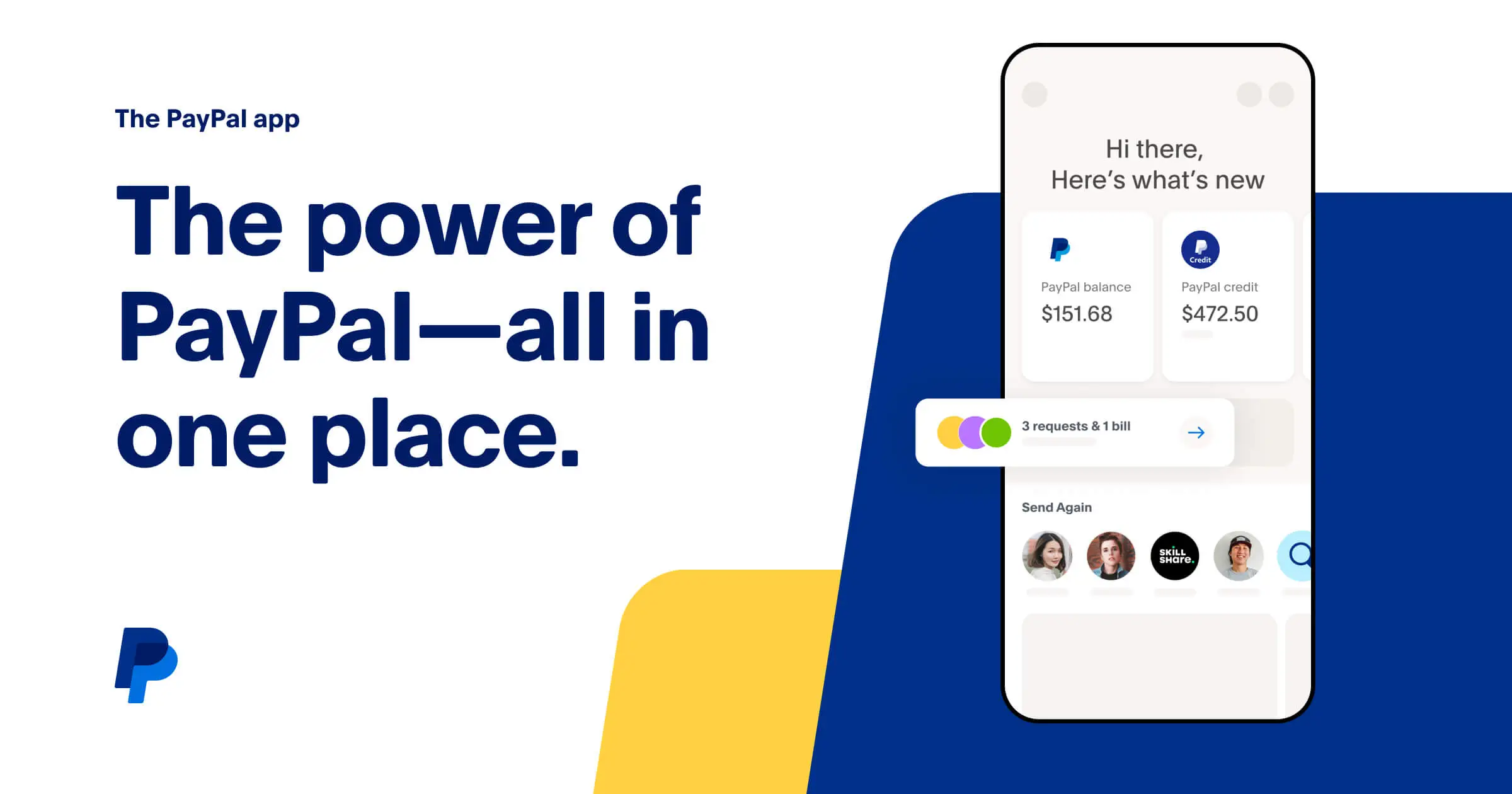
PayPal allows small businesses and online storefronts to securely accept payments in person, online, or over the phone. Besides, the advanced fraud protection technology that comes with PayPal provides additional security.
PayPal’s transaction processing fees start at 2.9 percent plus $0.30.
Click here to get an in-depth insight of this payment processor, see which businesses are using PayPal, and how does PayPal work.
Stripe
Another well-known full-service payment platform is Stripe. It allows store owners to accept payments both in person and online. Similar to PayPal, this gateway also encrypt everything to further protect your data.
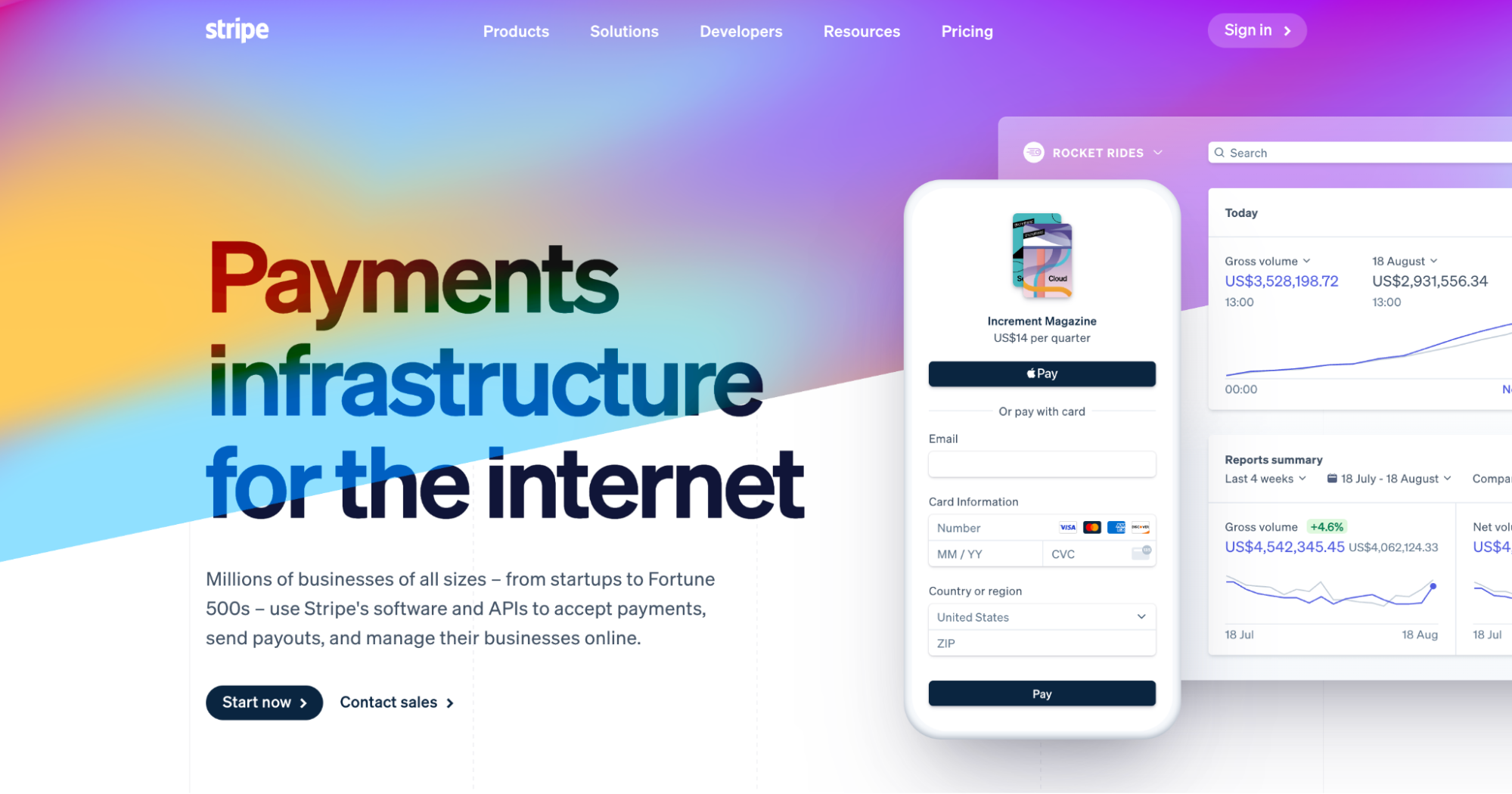
With their Integrated plan, their processing costs start at 2.9 percent plus $0.30 per transaction. Stripe also allows you to create a customized plan specifically for your company’s needs.
If you are interested in Stripe, here’s Stripe Fees: How Much Does Stripe Charge? for you to take into account before making a decision.
Square
Square gives businesses the ability to securely accept payments at the offline point of sale (POS) or through an online processor. It offers support for all major credit cards like Visa, Mastercard, American Express, and Discover. Moreover, with Square, you can allow your customer to buy now, pay later using AfterPay.

Their transaction processing costs start at 2.6 percent plus $0.10.
Do you know that in 2019, Square launched its own eCommerce platform called Square Online Store? Check out our Shopify vs Square: Which One is Best to Grow Your Online Store? now to see if this newly-emerge solution can become the leader in the eCommerce world.
#5. Launch Your Pop up Shop Online
Now you’ve set up everything needed for a pop-up shop online, it’s time for you to launch and market your pop up shop online.
You should get in touch with relevant social media influencers in your industry and offer them incentives to promote your brand or event to their audience. This marketing strategy will draw a ton of potential customers when combined with a specific event or store hashtag.
By investing in paid digital and print advertising, you will build an additional buzz while making the right people aware of your forthcoming pop-up venture. For example, you can create relevant articles, videos, or posts for your blog, and get active on social media.
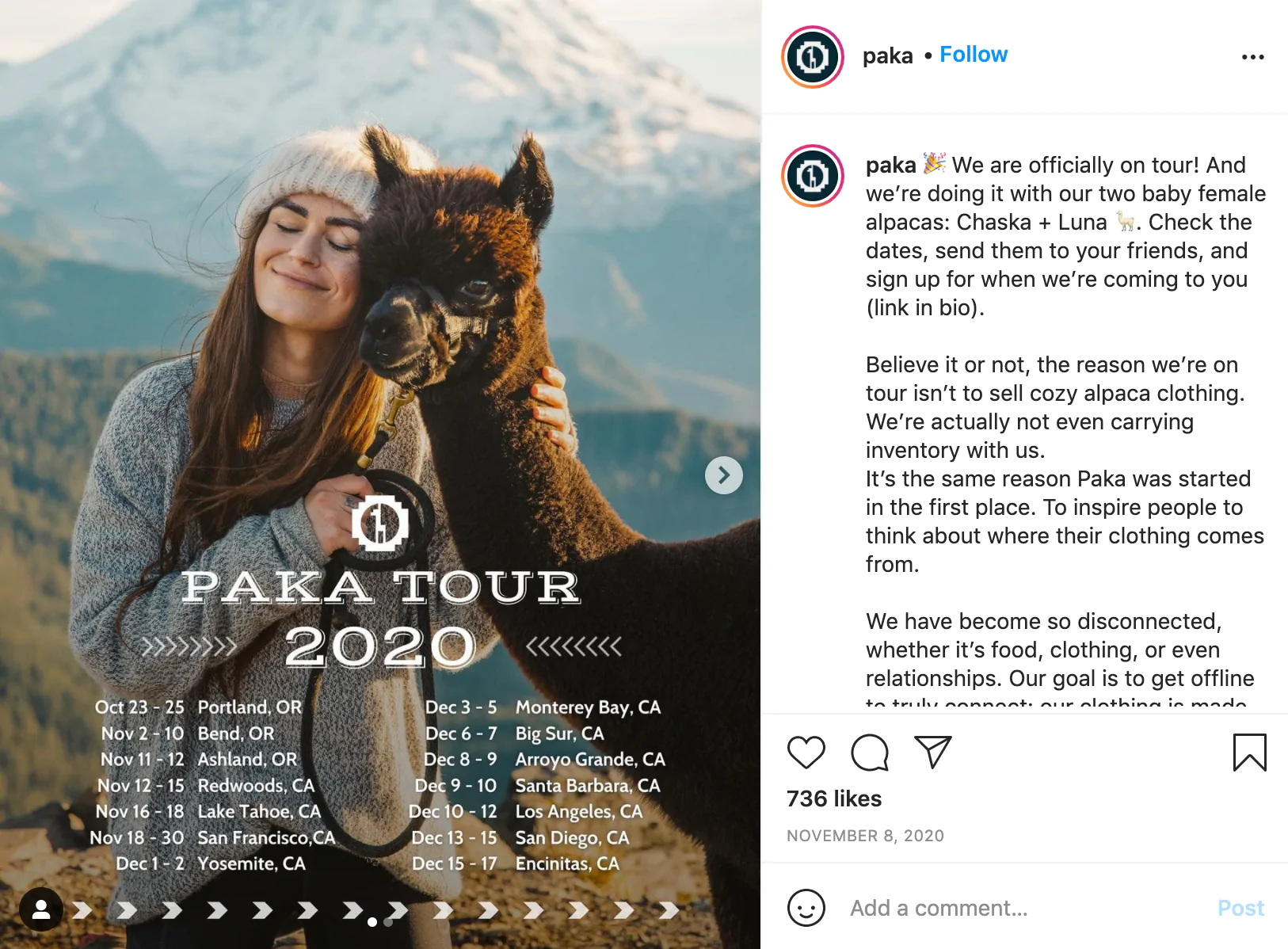
Here are some more tips and tricks to rocket your business:
Best Pop up Online Shop Examples
#1. Hoover’s Holiday Pop up Party – a Cyber-Deal Driven Shopping Experience
Hoover’s Holiday Pop Up Party is an excellent illustration of how to use an online pop-up shop as a component of a seasonal marketing plan. Home appliance company Hoover developed a store with all of their holiday specials in one location for the 2021 holiday season, including time-limited doorbuster offers and discounted bundles.

The virtual pop-up shop event from Hoover helps to mimic some of the thrills of traditional in-person shopping. A clever way to increase sales volume during the holiday season when in-store foot traffic is still down everywhere is to provide a discovery-driven online shopping experience.
Having a specific website for holiday deals is a smart marketing strategy for well-known brands like Hoover because more consumers are now searching for deals all year.
#2. UGA’s Biannual Mobile Retail Cart and Pop-up Shop Online
For college and university students who are keen on learning about entrepreneurship and small business, a pop-up shop is the ideal educational project.
Twice a year, University of Georgia business students launch a mobile cart and online pop-up store that sells a range of distinctive, regional goods, including clothing, coffee mugs, phone straps, and art prints.

Students taking a retail entrepreneurship course collaborate with small businesses to sell goods through a newly rebranded online pop-up shop and a mobile cart. Twice a week, the organizers will set up this shop at various locations around the UGA campus during the fall and spring semesters. Numerous goods honor the neighboring city of Athens, Georgia, such as postcards with a Classic City theme.
#3. Lancôme’s 3D Virtual Shopping Experience
Big brands are testing out immersive virtual shopping experiences. The exploration and excitement of an in-person shopping experience are aided by 3D models of in-store layouts and displays as well as 360-degree shopping tours.
For customers in the UK, Lancôme opened an immersive virtual pop-up shop in the fall of 2021. Their brief online pop-up offered customers the chance to interact with beauty influencers and skin care specialists. Customers could browse through 3D product views and displays that replicated browsing through a brick-and-mortar store and play games to unlock discounts.

eCommerce expands and virtual reality (also known as the metaverse) spaces become a new significant marketing channel. As a result, brands will place a greater emphasis on immersive technology-driven shopping experiences.
Large companies like Lancôme can test out new VR eCommerce technology features while also gaining a lot of attention by setting up an online pop-up store.
Pop up Shop Online – FAQs
[sp_easyaccordion id=”46554″]
Wrap Up
Online pop-up shops are a cost-effective way to promote your brand as well as your products. We have explained the definition and how to set up a pop up shop online. Some best pop up stores have been introduced for you to learn as well.
Hopefully, this article has helped you to create your own successful pop–up shop online!
If you have questions or inquiries, don’t hesitate to contact us. Our 24/7 dedicated customer support is always ready to assist you.
Last but not least, please join our Facebook Community to get more tips and news to grow your business.